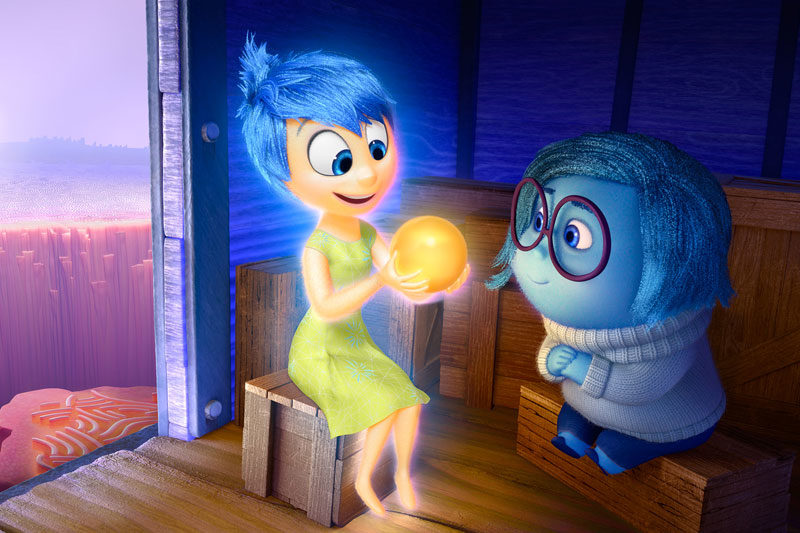
© Disney/PixarJoy and Sadness … ‘a new way to regulate your emotions.’
In the Pixar film
Inside Out, the emotions of an 11-year-old girl are personified as perky Joy, petulant Disgust and hulking Anger. Sadness - voiced by
The American Office's Phyllis Smith - is, predictably, a downer with a deep side-parting and a chunky knit. Amy Poehler's Joy can hardly stand to be around her, like a colleague you would time your trips to the tea point to avoid.
But the takeaway of the 2015 film - said by Variety to "for ever change the way people think about the way people think" - was that both emotions were necessary, and Sadness was as valid a part of life as Joy. Now there is a case for not only accepting Sadness, as in
Inside Out - but embodying her, too. Researchers from Hong Kong and Texas recently found that individuals asked to think of their sadness as a person reported feeling less sad afterwards, a result they attributed to the increased distance perceived between the self and the emotion.
Study participants were asked to imagine Sadness's personality, appearance, conversational style and how they might interact with them. In doing so, the idea was they would make it separate and less relevant to them. "
The underlying mechanics of it is detachment - when they think about sadness as a person, it's like they are endowing independence to the emotion," says Li Yang, a graduate student at the University of Texas at Austin and corresponding author of the paper, published in September in the
Journal of Consumer Psychology. "They feel detached from it, and that's why they would feel less sad afterwards."
Sadness is well established by research as leading people to focus on short-term and often indulgent rewards.
By picturing their sadness with human traits and characteristics, study participants ameliorated its effect and were then more likely to display self-control. Such anthropomorphic thinking was even shown to be an effective advance strategy, preparing consumers to choose a healthier (or more practical) option.
Comment: See also,